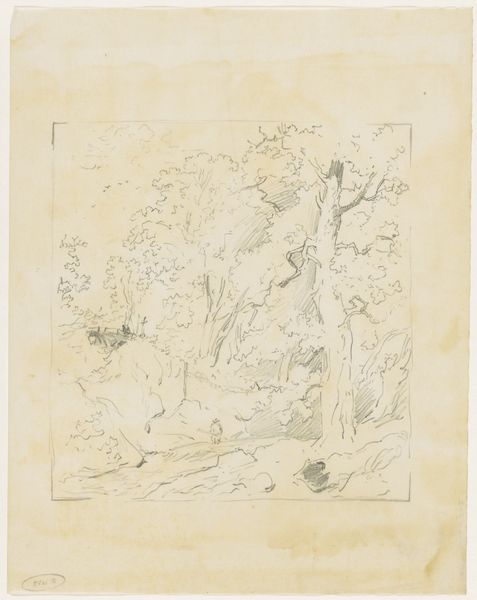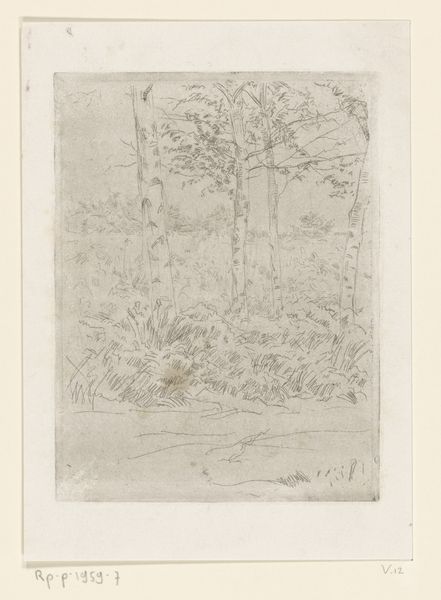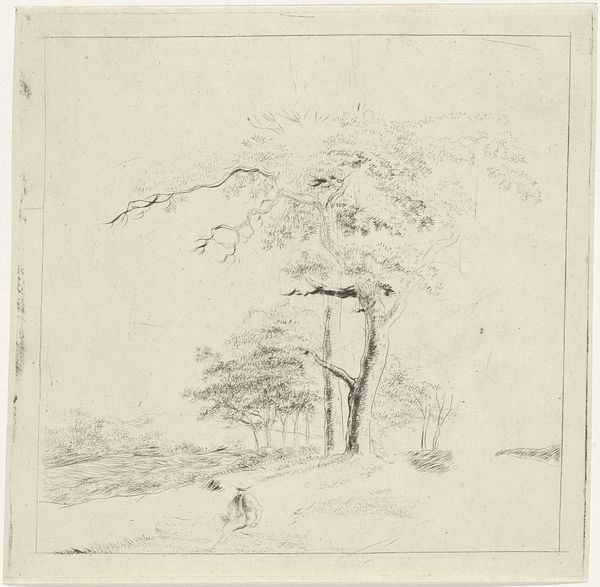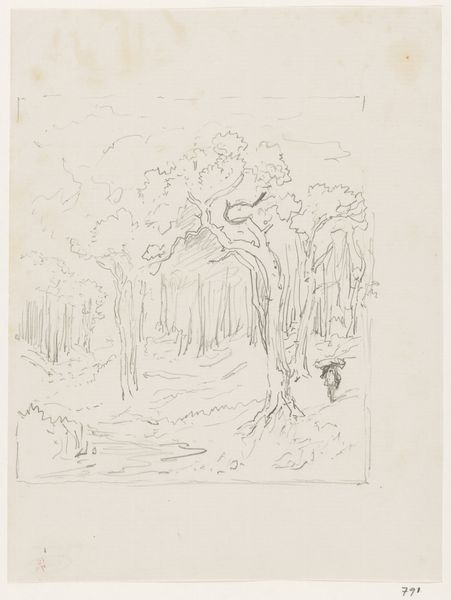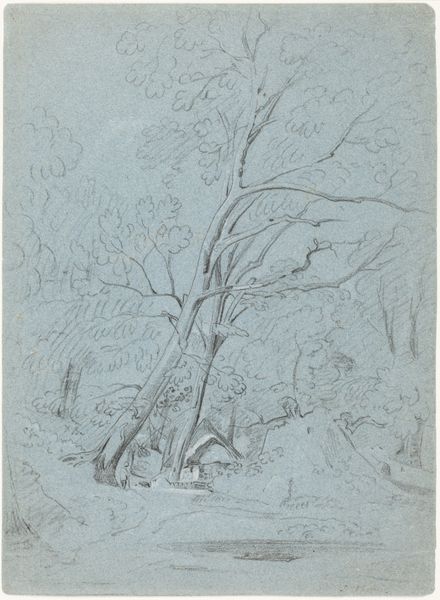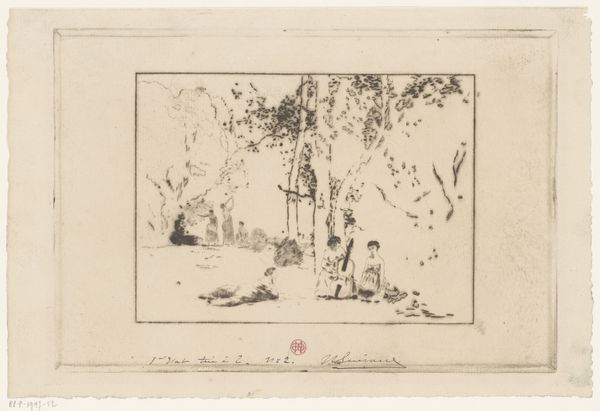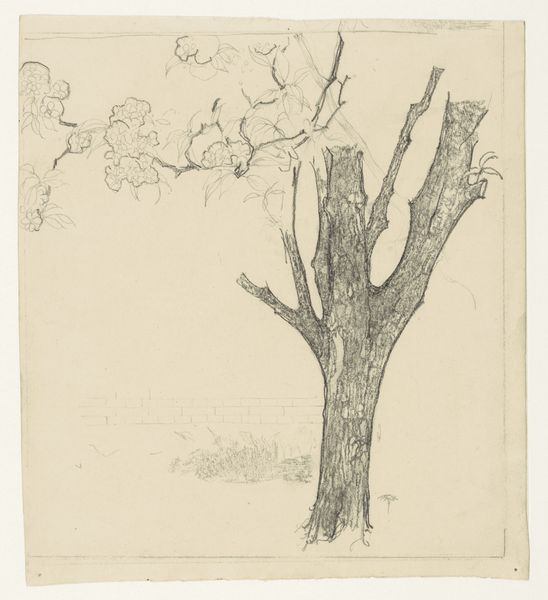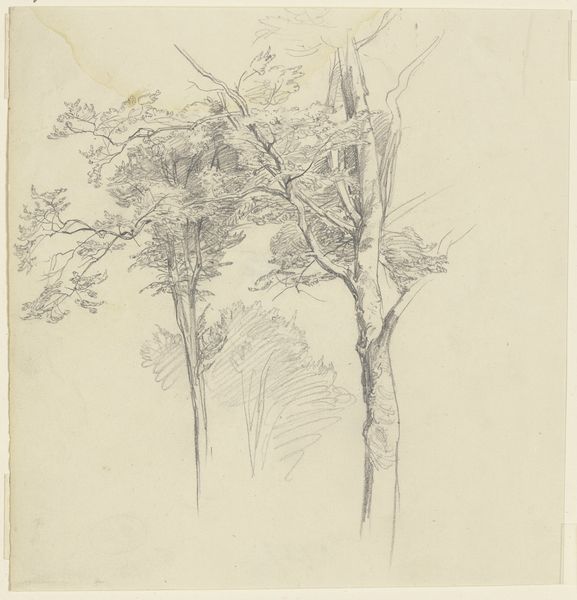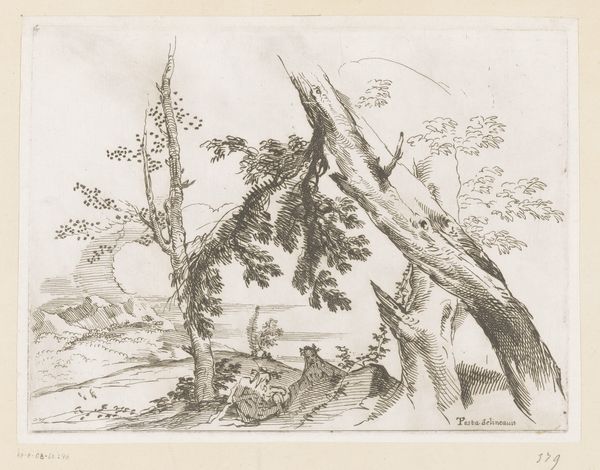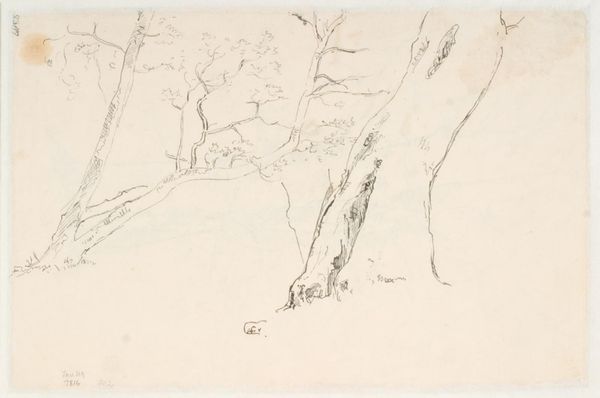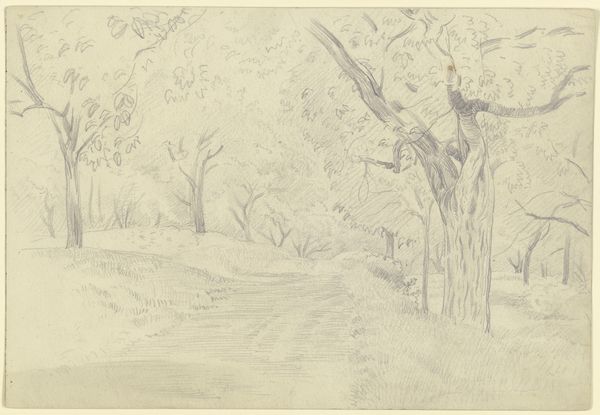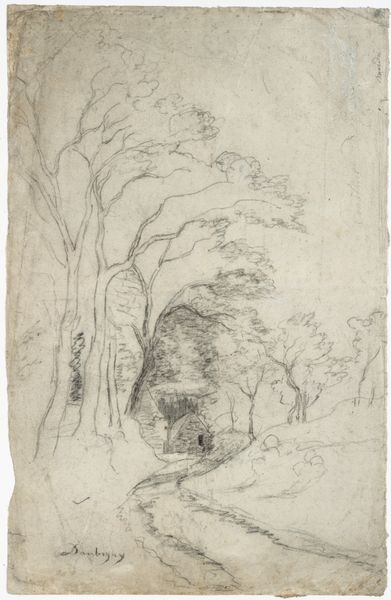
Dimensions: height 109 mm, width 105 mm
Copyright: Rijks Museum: Open Domain
Editor: So, this drawing, “Figuurtje in een bos” by David Alphonse de Sandoz-Rollin, dates roughly between 1750 and 1809. It's a graphite drawing of a figure in a forest, a plein-air sketch perhaps. There’s a delicate, almost dreamlike quality to the scene. What's your take on this piece? Curator: It’s tempting to view this work solely through a romantic lens. However, consider the socio-political context of the late 18th century. This period was marked by intense class disparity. Does this tranquil scene reflect an escape, perhaps a carefully constructed contrast to the reality of societal upheaval experienced by most? What do you notice about the figure's placement within the landscape? Editor: Well, the figure is small, almost dwarfed by the trees. It feels like the artist is emphasizing nature's dominance. Curator: Precisely. And what does nature signify during this period of Enlightenment ideals? While some celebrated reason, others, often privileged, found solace in nature's sublimity, implicitly critiquing the burgeoning industrial world that threatened established social hierarchies, like the aristocracy of Sandoz-Rollin himself. Is there an implicit critique of societal structures encoded in this retreat to nature? Editor: I hadn't thought about it that way. It’s fascinating how a seemingly simple landscape drawing can hold so much complex commentary about class and society at that time. Curator: Exactly. It reminds us to question whose perspective is centered within these idyllic scenes and whose labor allowed for their creation. Examining art this way opens space for a broader, intersectional understanding. What do you make of the choice to create it “en plein air”? Editor: Possibly about authenticity? Curator: Indeed! It challenges artifice. Understanding these contextual layers empowers us to critically examine how we continue to represent landscape and identity today. Editor: I appreciate the additional insight that the drawing isn't necessarily a purely Romantic work, but that it offers some observations about culture, society and class. Thank you!
Comments
No comments
Be the first to comment and join the conversation on the ultimate creative platform.
